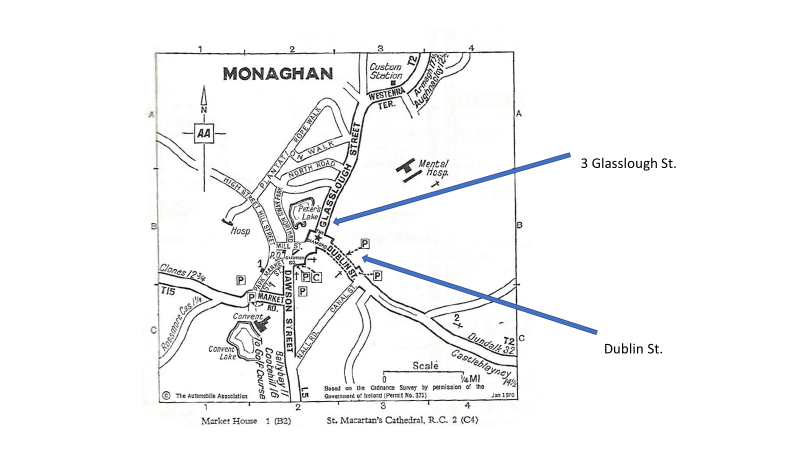Edward Murphy Family History
Monaghan Background
The Murphy family can be traced back to the early 1800s in Monaghan town. According to “The Monaghan Story”[1], the majority of Monaghan people are descended from families who have lived in the area for many generations.
During the 17th and 18th centuries many settlers from Scotland and England came to Monaghan. Those who settled in Monaghan town were mainly Presbyterian. In the late 18th century Monaghan became an important centre of the linen industry, and the prosperity arising from the industry led to the erection of several large houses in Monaghan, particularly on Mill Street and High Street. Many poorer (typically Roman Catholic) people who lived in cabins in this area were evicted and moved into the town, causing the growth of slum streets and alleys.
Edward spent most of his life in Monaghan, living in the area around Dublin Street from 1896 until his marriage in 1917. He then lived at 3 Glaslough Street (also “Glasslough”, especially in older documents) until his death in 1939.
Pigot’s directory of 1826[7], mentions that the boot and shoemakers at that time were all in Glaslough Street. From early in the 19th century Monaghan had close commercial links with Belfast. The Ulster canal linked Monaghan with Belfast in 1839 and the Ulster railway link opened in 1858. Dublin Street was completed in the middle of the 18th century, and around this time Glaslough Street was built up as well. Old Cross Square was also known as “The Shambles”. Monaghan had gas lighting from the 1840s. The St. Louis convent arrived in 1859 and the Christian Brothers in 1867.

MAP OF MONAGHAN (1970)